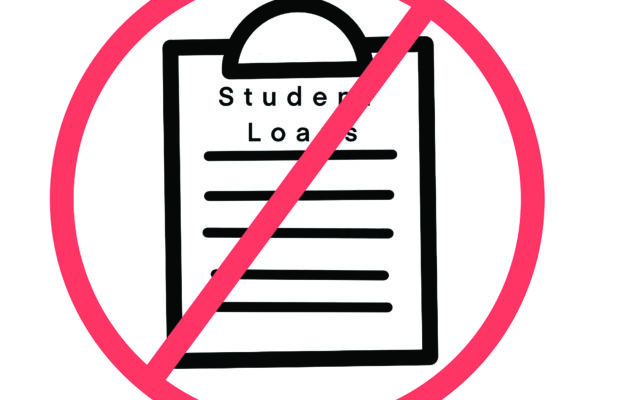Biden announces student loan forgiveness program

On Aug. 24, President Joe Biden announced his three part plan to help federal student loan borrowers transition back to regular payments, which includes forgiving up to $20,000 of student loans. The first part of this plan is to extend the pause through Dec. 31, 2022. Since the Biden-Harris administration took office, they have paused payments on student loan repayments due to complications caused by the pandemic. After the pause, payments will resume in January 2023.
The second part of this plan is to provide debt relief to low and middle income families. Individuals earning under $125,000 a year or households earning under $250,000 a year are eligible for up to $20,000 worth of loan forgiveness.
Over the past 40 years, college tuition has skyrocketed, but the support from the federal government has not kept pace. As a result, the cumulative federal student debt is currently at $1.6 trillion, with over 45 million people currently having student debt across the country. One-third of those people do not have a degree due to the high cost of attendance.
The applications for the student loan forgiveness program are set to open in early October where borrowers can apply to have their debt forgiven. The White House estimates that 43 million people will be eligible for student loans and that 20 million people will have their debt fully cleared. The total cost of this plan is predicted to be around $600 billion.
However, this announcement has been pushed back by the Republican party. “A high-cost degree is not the key to unlocking the American Dream — hard work and personal responsibility is. For many borrowers, they worked hard, made sacrifices, and paid off their debt. For many others, they chose hard work and a paycheck rather than more school and a loan. Americans who did not choose to take out student loans themselves should certainly not be forced to pay for the student loans of others,” 22 GOP governors said in a letter to President Biden. The money that the taxpayers would have to pay for this plan ranges from $190 for taxpayers with incomes less than $50,000, and up to $11,940 for taxpayers making $200,000 – $500,000 a year.
On the other hand, some say that the amount being forgiven is not enough, specifically for Black borrowers. Four years after graduation, the average Black borrower owes $53,000, while the average White borrower owes $28,000. The plan is also criticized for using income as a measure of whether or not someone is eligible to have their debt forgiven. The borrowers that were previously of lower class, but now are of middle class may still have massive debt, but cannot apply for forgiveness due to their income.
President Biden ended his remarks about his student loan forgiveness plan by saying: “That’s what today’s announcement is about. It’s about opportunity. It’s about giving people a fair shot. It’s about the one word America can be defined by: possibilities. It’s all about providing possibilities.”



